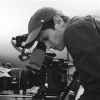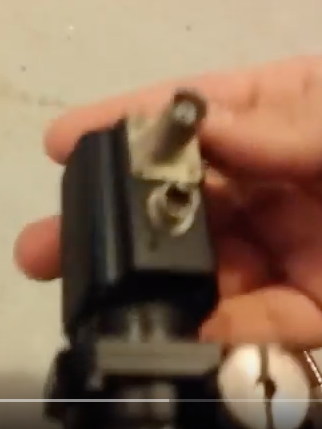Search the Community
Showing results for tags 'FILM'.
-
In the middle of Feb. I will be DP'ing my first feature film. I will be providing my personally owned lighting and grip equipment as well as a RED Dragon cam. I will be lighting the scenes,camera operating, and providing directorial advice to the director. Shooting is scheduled for 3-4 weeks. There is a budget for me to be paid an (ok) rate in installments over the course of those 3-4 weeks. The film will be submitted to bigger studios/reps/investors for consideration of being picked up or bought and being produced on a bigger scale with bigger budgets. In the event that our version does actually get picked up, I assume the the producer/production team is compensated for it correct? How exactly does it work? Is it one payment or is it like royalties? I'm currently typing up a contract that is due in 24 hours to define the terms of work and payments for the project and I want to make sure that if there is backend compensation from getting picked up, that I get covered and receive a piece of that compensation. How should I word this in the contract? Any advice would be greatly appreciated?
- 2 replies
-
- feature film
- film
- (and 5 more)
-
So I am heavy into interviews and music videos and but I just finished up my short film. I am wondering what type of work people look for on a reel that pleases there eye. Do you guys have any examples or your reel you could share with me? I'll been making my self busy trying different kinds of video work to get better looking stuff.
-
Hi, everyone It's my first time posting here :) I've received my first test roll (Kodak 200T) from the lab, shot with my K-3 and the 17mm-69mm Zenit. Loaded carefully in semi-darkness and unloaded in total darkness. Camera was covered with plastic tape when filming (except the meter counter). I found two issues: There are light leaks all over the footage. Not following a constant pattern, some shots are more affected than others but always with the same shape. I've attached two stills of them. I set the speed at 24fps but the footage is in fast motion with the telecine at 24fps. It looks as it was filmed between 12fps or 14fps. I made two shots at 48fps additionally and that ones are running at the correct speed to me. Is it possible that the fps dial is not matching the actual speed? Thank you very much everyone, Marcos
- 10 replies
-
- krasnogorsk3
- 16mm
-
(and 3 more)
Tagged with:
-
First post on this forum. I must say, having never actually worked with film before, I'm glad I found this website. Very informative. DISCLAIMER: Never having worked with film, my knowledge comes entirely from the internet, no hands on experience. So if I say anything that sounds absurd, just let me know. Having always used digital cameras, I want to shoot a movie on Super 16mm film, and have it finished on 35mm film. I've been trying to work out the workflow to get from the exposed negatives to that final print. I want to have it photochemically color timed, preferably without ever having a Digital Intermediate. Now, if I were shooting on 35mm, I would simply color time, make the inter negative, and make copies from there, all analog. But with super 16, there is the sticky problem of having to blow it up to 35mm, and from what I've read, there are many ways to go about this. There are several discussions already on this forum, but most of them are over 10 years old, and the technology seems to have changed rather significantly since then. I have an idea for some possible workflows, but I don't know if they would actually work the way I want them to or not. One of them is to edit the 16mm film together, have it color timed, then optically blown up to 35mm, but I'm not sure if the colors would translate well (I've read conflicting statements, but some say that an optical printer can't reliably transmit the colors, meaning it might have to be retimed.) If that were the case, I could have it edited, optically blown up to 35mm, then color timed, but that adds the cost of working with more 35mm in the process. For another option, and I wouldn't really mind this as long as I didn't have to digitally alter the colors, but I could edit the 16mm film, color time it, then data scan it at 4k(Not that much more expensive than 2k) then downscale it to 2k(or not, if printing 4k weren't much more expensive, but I don't know.) and have it printed to 35mm film. The problems with that, however, after it was scanned, I don't know if you would have to digitally alter the colors, or if the direct scan can be printed back without any processing. If it were the case that I would have to mess with the colors digitally anyway, then another thought was that I could edit the 16mm film, scan it without color timing, print it back to 35mm film, then photochemically color time that copy. But, that might be absurd. I don't really know, but I feel like after it was scanned, then printed, there might be some information taken from the film that makes photochemical color timing less effective, since you're just working with what a digital printer put on it, not the original analog goodness. That's a bit of a book, so I'll summarize my specific questions: 1. Assuming both processes were done properly, which would be less expensive, optical blow up, or scanning then printing back to film? (I have no reference for cost for digital printing or optical blow up. As far as I know, in this day and age, one could be far cheaper than another.) 2. Assuming both those processes were done properly, which do you think would give the best results? (Knowing that I want a photochemical timing done.) 3. Will an optical printer transfer the timed colors properly, or would it have to be timed again? 4. Will a scan of an already color timed print properly transfer the colors when printed back to film? Or would the colors still have to be digitally altered before printing. 5. Can and untimed scan that has been printed back to film still be photochemically color timed, or is that absurd? 6. Sort of related to the first question, but any reference as to how much printing 2k and 4k digital to film would cost? I can't find any information on the cost like you can with scanning. Also, specific costs of the optical blowup. I feel like some people are going to ask, "Why not just use a digital intermediate, instead of photochemically color timing? it would give you much better results, and be cheaper", and they're probably right, but it's just a hands on artistic thing. I'm relatively young, and grew up in a world that is entirely digital. Watching actual 35mm films at a theater is like a distant childhood memory, as most theaters have long been digital. And making movies with digital cameras is all I have ever done, but quite frankly, I'm at a point where I would like to create movies the same way my favorite movies from decades past were created, even if it slightly compromises visual clarity.
-
New member here. I have been given an old Hanimex Super 8 Zoom projector, but cannot understand how the film is actually supposed to be projected, the spools are not in the right place for the film to pass between the light and the lens... Please see the photos below... Also, if anyone spots anything else I've done wrong, please let me know! (I know the film is loose in most of the shots, I just put it there for show)
-
Hey everyone, I'm looking to rent an anamorphic viewfinder for my Moviecam Compact MKII. I've been asking around but can't seem to find one! I believe the Arricam viewfinder extensions work with the Compact MKII as well. If you have access to one or know where to rent one, I would love to know. Thanks!
- 2 replies
-
- anamorphic
- viewfinder
-
(and 6 more)
Tagged with:
-
For Sale: 2 cartridges of Kodak Super 8 Ektachrome 100D film. Has been kept in freezer since purchased from Kodak. Asking $120.00 US plus shipping.
-
Hey, Ive got about 4000' of old fuji that I am planning on shooting a short on. Ive had it for about 6 years in my fridge. its half Eterna 250T 8553 and half Eterna 250D 8546. I just got the snip test back from fotokem and it looks like my layers are between .25 (red and green) and .70 (blue) off from what they should be. Im wondering if, for instance, I could add a yellow filter to my lens when I shoot to make the overall shift of my blue channel get back more in line with the other channels? Does it work that simply, or am I missing something. My thinking goes that if I add 1 stop of yellow to the overall image, then that would put my blue channel at roughly .20 over where it needs to be, and then if I over expose by a stop then that will help the overall quality of the image (though it will still be grainier than normal and a little funky in the colors. Is this reasoning sound?
-
I recently purchased the expired Kodak Film Stock listed below and would like any suggestions on the best F-Stops for exposure. I plan to telecine to 1080p or 2K. Will be using a K-3 16mm camera. 7246-250D 7274-200T 7279-500T 7289-800T 7298-500T Thanks Nate
-
Hey everyone, Despite all the benefits of growing up in the digital age, I hate that I missed out on the era of film. What are a clapper/loaders particular duties on a set? What does one do for labeling spent reels? How are spent reels stored? Are reels loaded with film ahead of time? What are the dutyseparations between them and the ACs?
-
Looking to buy Arri SR3 or Arri 416. Anyone know where I can find either? Thanks
-
1 x Arri 416 Plus HS body (Ran Film One Roll Of Film For Testing) 1 x Arri 416 Plus non HS body used. 3 x 416 HS magazines (2 with time code modules) 3 x OBB-2 on board batteries and charger; various handles and 1.78 SAFE screens and manual. a box full of free super 16mm film to play with. All flight cases to house it in. Selling as a complete lot only. Please make an offer at sales@broadcastsolutions.com
-
Is there on the market some sort of film dispenser, allowing us to keep large spools of 2000' film stock, and transfer lengths of 100 ft on a smaller spool for shooting? Occasionally I see good deals on larger film cans but my camera only use 100 ft spools so I was wondering if there's a way I could buy these large reels, and conveniently transfer on 100ft spools. sv
-
Colorlab and Kodak are having a film workshop on October 26th and 27th in Rockville, MD. Randy Tack, cinematographer and lead imaging instructor for Eastman Kodak, will be leading the workshop. Topics covered include 16mm and 35mm cinematography and the motion picture film workflow. Participants will be shooting and screening dailies both on film and digitally. Please pass on the information to anyone you think may be interested. It's FREE, but spots are limited and filling up fast! For more information or to register, go to: http://www.colorlab.com/workshop.html
-
Hi Everyone, I have a quick question in regards to shooting 16mm as I have pretty much no experience doing it, though it's something I wouldn't mind trying even if it cost some $$$. I picked up an old Keystone A-12 at an estate sale for $20 and was having trouble finding any information on it. Specifically, was wondering if it took single or double perf film. From my eyes it looks to be single perf, as I can only see sprockets on one side of the guide reel, but just wanted confirmation from those more experienced in this. Chris
-
Hey all, I have an Aaton Aminima Super 16mm camera package up for sale. It's in excellent condition and was recently serviced at Abelcine. I'm currently traveling but if anyone is interested I can put together some photos and reference videos when I get home. Here's what's included: - Aaton Aminima - 3x 200' mags - 3x daylight spools - Onboard Aaton side battery - Battery charger - Video tap - Wooden handgrip w/ lemo connector - 15mm rods - Carrying case - I also have a roll of 250D and 50D that I'll toss in as well :) Asking for $5,000 but open to offers. The camera is located in SLC, Utah. Will accept PayPal. Please feel free to reach out with any questions. pendleton.tanner@gmail.com 978-340-2012
-
Hey there! I'm sorry if this is too many questions at once, but I figured it would be better to just lay my initial questions all out at once instead of peppering them throughout the thread over time. I graduated from college this May with an English degree and a minor in Communications, and I want to go to film school as a graduate student. In order to do this, I need a short film (I'd really like to go to USC). However, my university didn't/doesn't exactly have a cutting-edge film program, so I'm a little flustered. Here's a bit of background about my short film project. It concerns a young woman going to a bar in the early hours of her 21st birthday (it's like 12:08 AM) and ordering her first-ever drink. It's going to be shot without dialog--it will be all body language and sound effects, like a Pixar short, if that makes sense. I want the look of the film to be "objective" (I know that's not a real thing in film) except for a couple of wide-angle shots and a deep focus shot which pulls back over the bar to establish that she's in a bar (if there's a way to do this without deep focus, let me know). I'd also like to do something like this shot from The Music Man (https://youtu.be/CC33O52pGUg?t=2m43s). I don't know how they did it, but I suppose you can cheat it in post if you're a good/patient enough rotoscoper. Anyway, I was looking into what kind of camera I should use to film this project. I've saved up a bit of money and I want to get the best camera possible for the job without requiring me to learn a textbook-worth of information or have tons of hands-on time with the camera before I use it. Since I'll be filming in a real bar (sadly, I haven't saved up enough money to build one from scratch on a soundstage) at night, there will be low light and the possibility of competing color temperatures (since I can't exactly tear out any lights). I'd also prefer to go for as filmic a look as possible. I would shoot the project on film if I could, but I super-don't know enough about film to do that. For this reason, I was looking at either the RED camera or the ARRI Alexa XT. After reading about the RED, I came away with the impression that it was a very particular camera that had kind of a steep learning curve, and that the ARRI Alexa XT would be much easier to shoot with, although I don't know if it's easy enough. My experience has mainly been with that one miniDV Canon SD prosumer camera that everyone had. I also would like to shoot Open Gate ARRIRAW for the project to maximize the pixel count for upscaling to 4K. Since I live near Atlanta, I'm looking at renting from here: http://pce-atlanta.com/. Here is their list of cameras and lenses (PDF): http://www.pce-atlanta.com/pdf/Camera%20Catalog_4_8_2013.pdf. I'm going to be renting the camera and lenses for a weekend. So my first question is: how feasible is this? Especially as I've never used the Alexa before and I'm not an experienced color corrector. Can you just drop ARRIRAW footage into the free version of Da Vinci Resolve or Adobe SpeedGrade and get good results just by messing with a few presets, or is it going to be a month of tedious work? Because I don't have the time to devote every day to it, especially as I'll also be doing foley work. My second question is this: ARRIRAW is flat footage, correct? So how do you know how the colors are going to look when using the monitor? My third question is: how much is that Codex docking station that plugs into the USB 3.0 connection on a MacBook Pro? I've been unable to get a straight answer from their website. And do I need to buy a software license to transfer the ARRIRAW files to a hard drive using it? My fourth question is this: what kinds of lenses should I use? I was thinking of just getting a zoom lens, since that would be cheaper, but would I be able to pull off that deep-focus shot with it? And ARRI's website tells me that shooting in Open Gate ARRIRAW can be a problem because a lot of lenses don't fully cover the sensor area. Do any of the lenses on that list qualify? I'd rather not abandon the Open Gate part of my plan, but I'd sooner abandon it than abandon the Alexa XT (although if I weren't shooting in Open Gate ARRIRAW I guess I could switch to an Alexa with the XT module), so if I have to, I will. My fifth question is: do I need to get a new tripod? I mainly have the kind which you can use for still camera work or for that relatively light Canon prosumer camera I mentioned. Is the Alexa XT a heavy camera? My sixth question is: lighting. I don't understand it. I have a lot of questions about it. I'm considering just using the available light for this reason. For instance, I understand the three-point lighting method (or I think I do, anyway) and I understand how it's easy to do in close-up, but what happens when you cut to a long shot from a different angle, exposing where the lighting rigs would be? My seventh question is: how do I keep it from looking like TV? Let me elaborate on that. I initially thought that aspect ratio played a part in making TV look like TV, but Better Call Saul looks like a movie to me, and Witness for the Prosecution, mistakenly presented in 16:9, looked like a movie as well--not like TV. So my theory is that it has something to do with coverage and composition (and maybe editing and lighting, too). I want my short film to look like a film. What are some common pitfalls I should avoid if I don't want my film to be mundane? I think that's it for now. If you guys could do me a favor and keep checking this thread, I'm sure I'll have more questions. Thank you so much for your time. Also, please let me know if in the future I should make separate topics for questions with separate subject matter. I just didn't want to clutter up your forums.
-
Hello, this is my very first post on this forum so first of all thank you all for having some time to read and answer this question. I'm going to shoot a project on S16 (arri 416 plus) next month and I don't have nearly the same experience with film than digital so I'm sorry if this sounds really newbie. Basically I'd like to know what's the real and usable dynamic range of kodak Vision3 and all the elements that affects it (print, scan, etc). I Research on this forum, internet and on Kodak's website and the numbers change considerably. Kodak says it's about 10-11 stops, then I read that the official number is 14 (this is hard to believe) and some friends told me it's about 7 stops (-3, +4). Also I wanted to know if the print and the scan are really important to save the dynamic range. I read a Kodak document that recommends to use 16bit scan when the stock is Vision3 to hold all the dynamic range in there. Also, which scanner do you recommend me? What I read the best one is DPX 16bit but it may be really expensive so I'd like to have a cheapest solution that can hold the DR of the film. Thanks!
-
I am selling Kodak Double X 35mm film short ends - 70 meters, or 230 ft. From another film production earlier this year. Purchased directly from Kodak, kept refrigerated at all times. Kodak rates it as 250asa, i shot is as 125 and got lots of details in shadows. I can ship it with USPS priority service in the US. 100$
-
WRITER/PRODUCER/VISUAL DESIGNER SEEKING DIRECTOR OF PHOTOGRAPHY WITH HER/HIS OWN EQUIPMENT WHO CAN EDIT AND PRODUCE — TO PARTNER ON PRODUCTIONS Hello everyone! Thank you, in advance, for taking the time to read my post. If it interests you I look forward to hearing from you... if it doesn't then I simply wish you amazing success on all your projects. I cheer for everyone to get their TV and film projects made! Okay...I'm a writer and producer, and a visual designer. I have multiple completed feature scripts and many more ideas/treatments. I have an open invitation for a pitch meeting with an Emmy winning TV producer who has produced hit after hit. I have received extremely positive feedback and praise on my feature scripts from other producers, known/recognizable TV actors, as well as Emmy nominated writers. Here is an excerpt from my recent thriller script feedback from one Emmy nominated writer who is also a director and a Sundance Grand Jury Prize nominee: " It’s a really well done story and has a lot of box office potential ... It is often thrilling, suspenseful, and downright creepy — all ingredients you need in this genre. You have built a world that feels authentic and isolated, which helps enormously. I think audiences who love to be scared will eat this up. " I quoted them only to assure you that I can write well, as I know you don't want to waste your time anymore than I do. In addition to good feedback I was recently recommended to a lit agent by a couple of producers to be the screenwriter for the adaptation of an autobiographical book about a highly publicized national story. There are many projects I want to develop and shoot, but I need the right partner with whom I can grow with, someone with talent, a similar mindset, and equipment who can shoot and edit, and produce as well. I'm seeking someone who is extremely serious and 0% flaky. I have low budget, low-mid budget, and no-budget feature film projects we can discuss, reality TV projects, even YouTube possibilities. A few are pretty ready to go, some need more development, and many are just loglines or ideas we can build out. I co-produced a feature film (2010) that won a few festivals and had a small theatrical release before going on to its TV release. I have many years in the industry/LA and know some indie directors, distributors, DPs, producers, Emmy nominated writers and EPs, hair & makeup keys, production designers, other great crew, etc. I have good instincts, can think creatively in the moment, have ideas on how to structure funding to shoot, and am excellent at casting as I know what good acting looks and sounds like because I was conservatory trained and acted professionally in the past. In addition I have a B.A. in graphic design and have years of professional experience in NYC, DC, and LA designing posters, one-sheets, brochures, logos, etc. so we'll never have a one-sheet that looks like someone's dog made it in Microsoft Word. I am seeking someone who wants to commit to a real partnership of collaboration and focus on making product that will be captivating and commercially successful, and have a lot of fun as we go. If this sounds like the partnership you are looking for and you are a talented Director of Photography with your own equipment who can edit and produce, please send me an email with a little bit about yourself as well and a link to some of your work. Thanks for reading and for your consideration. I'm looking forward to getting projects DONE! :) EMAIL ME AT THE FOLLOWING EMAIL ADDRESS: partner2produce@gmail.com
-
I recently purchased some Kodak Vision3 re-cans and short-ends film stock. I’ve read differing opinions in regards to refrigerating versus freezing the film. Some have recommended to not freeze the film as it may be damaged from the process. Is there any general consensus as to the best practice for storing film? Kodak literature states that freezing film is an appropriate step for longer term storage (more than six months). I don’t know when I may use it and if the time period will exceed six months. Can I promptly freeze the film to slow the degradation process? With my film stock being re-cans and short-ends, I feel I should be more mindful of degradation, but with it not being in factory-sealed cans anymore should I avoid freezing? What are the best techniques to safely store new and opened film stock? Fridge or freezer? Should I place the cans in zipped plastic bags? Should I insert selica gel packets to reduce moisture? Any tips or suggestions would be helpful. Thanks!
-
Up for auction Now. http://www.ebay.com/itm/-/272107471058? Package Includes: Arri Metal Flight Cases ARRICAM Lite 35mm Camera Body PL Mount Filter Mask 18,7 x 24,9 Camera Aperture Cover Gate 1.33 full aperture ANSI Ground Glass Format 1.85.1 RS Block 24v RS Block 12v LT Camera Handle LT Center Handle Magazine Port Cover LT Viewfinder Top Finder Block Short Eyepiece + Rubber Eyecup Extension Eyepiece LT Frame Glow Frame Glow Mask Format 1.85 LT S35 LT IVS Color Video Tap Case Containing (3): 400' LT Shoulder Magazine 400' LT Shoulder Magazine 400' LT Shoulder Magazine Package Details: This camera package is from the inventory of ARRI Film & TV Services Munich which has been its sole owner. The entire package is in impeccable condition and has been maintained by professionals in Germany for its entire lifetime. The camera performs at factory specifications and is free of any mechanical defects. There are very few ARRICAMs left in such good condition.
-
Cameras éclair
-
Updated and reduced price from earlier this year. I currently have a small inventory of factory sealed cans of Kodak 16mm negative in storage in France. I had planned to shoot it myself, but the need is no longer there, so I'm willing to sell it at a discount. If you're interested, and located anywhere in Europe, it would be easy for me to ship it. I have in proper storage: 9 brand new sealed 400' cans of 7203 50D 1 brand new sealed 400' can of 7207 250D 200ft shortend of 7219 500T 100ft shortend of 7203 50D 240ft shortend of 7203 50D The new cans are 70 euros each and assuming someone wants to buy alll 10 cans I'll throw in all of the shortends for free. You have my guarantee they are just as shootable though. The shortends where made at the end of shooting days when film was still remaining in the camera mag but it needed to be loaded with a different stock for the following day. The rolls were cut with scissors in a changing bag and put back in their cans, still on a core. To reiterate: - 70€ / can (preferably would like all 10 purchased) + shipping Message me if interested.
-
Hey guys, So I've recently purchased an old SR2 modded to shoot super 16. It's a solid package but the only thing missing is a video tap. I've contacted a guy that used to build Jurgens taps and he has the parts but it can get pretty costly. My other idea is to purchase another camera I have found (An SR1 with a tap) and install it in my SR2. The price would be far better taking this route. The bodies are almost identical as far as i know on the viewfinder/eyepiece side of things. My only concern is that the tap on the SR1 won't cover super 16. I know the old Jurgens taps would cover both but I am not sure about this one. The wonderful gentleman who is selling the SR1 has been kind enough to send me a video detailing the camera. Here's my dilemma: The tap isn't labeled and my google research to identify it (and get specs on whether it will cover S16) have come up short. Does anyone know what this tap is, its history, and if it covers S16 or not? (images attached: apologies for the quality. They were taken from a youtube link) Thanks everyone!


.thumb.png.a75acc5a9fbbac6b09530ed452346fe2.png)
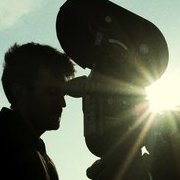

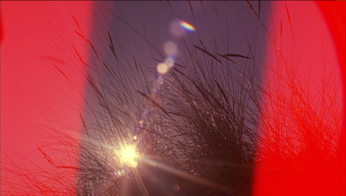

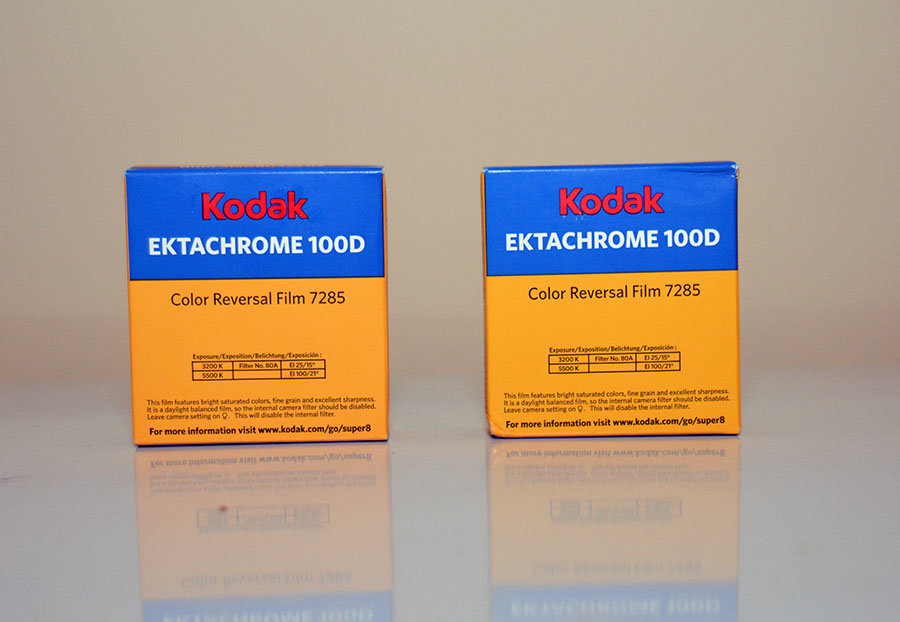

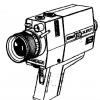


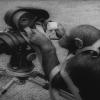
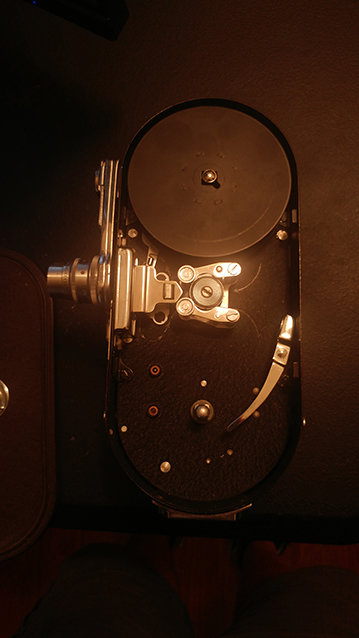
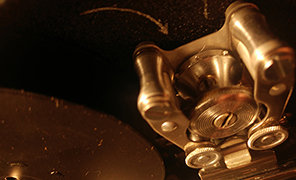
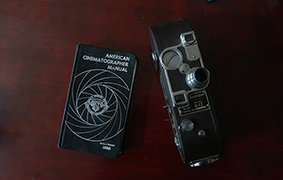
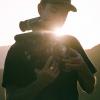
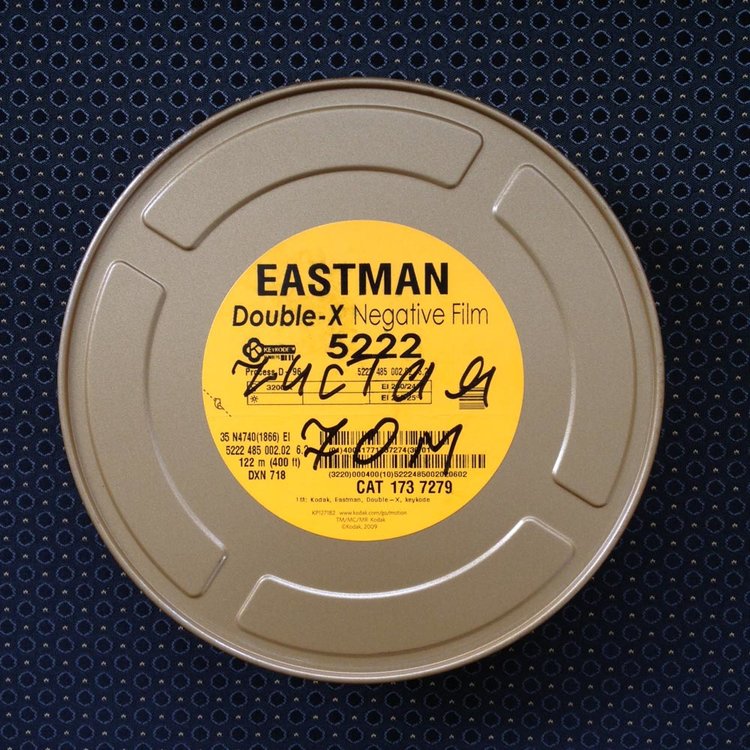

.thumb.jpg.e368d3f6c75b6e15259b409dbdbc98f3.jpg)

